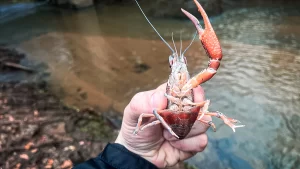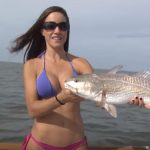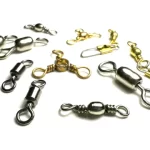Crayfish are often overlooked as live bait despite being one of the most effective options available. Anglers frequently gravitate toward more common baits like nightcrawlers, minnows, or mealworms. Yet crayfish stand out as a versatile and nutrient-rich bait that can attract a wide range of fish species. Here’s a comprehensive guide to catching, rigging, and fishing with crayfish.

Why Crayfish Are Exceptional Live Bait
Crayfish are abundant across North America, thriving in lakes, ponds, rivers, and streams. They are an essential forage for species such as smallmouth bass, catfish, walleye, perch, pike, and trout. Their effectiveness is evident in popular lure designs, such as jigs, tubes, and creature baits, all of which mimic crayfish to some degree.
Despite their effectiveness, crayfish are often ignored due to the challenge of catching and handling them. Known by various names—crawfish, crawdads, mudbugs—they are a valuable addition to any angler’s bait arsenal.
Understanding Crayfish
Crayfish are freshwater crustaceans closely related to lobsters. They breathe through gills and are opportunistic feeders, consuming everything from decaying organic matter to nutrient-rich muck. Their prominent claws serve as tools for both defense and feeding, and they can regenerate lost claws within a year.
Crayfish undergo molting with every moon cycle, shedding their old exoskeletons to grow new ones. During this vulnerable stage, their soft bodies and altered colors make them easy prey for predators. Observing these color changes can help anglers select the most effective bait colors for the season.
Catching Crayfish
Catching crayfish can range from simple hand-catching to more sophisticated trapping methods.
- By Hand: In small streams, flip over rocks gently to locate crayfish. Position hands strategically to capture them without getting pinched. Grabbing them just behind the head reduces the risk of injury.
- Trapping: Using a crayfish trap, such as Bass Pro’s Crawfish Trap, offers a convenient option. These traps use bait—such as chunks of dead fish or shiners—to lure crayfish. Traps can be left to soak overnight but should not be left too long to prevent aggression among the crayfish.
- Seine Netting: For larger hauls, a seine net can be used with a team. Place the net in a swift section of a stream and have others disturb the upstream bed to drive crayfish into the current.
Locating Crayfish
Crayfish are found in various environments, from riprap banks in reservoirs to slow-moving streams.
- Lakes and Reservoirs: Look for areas with rocks, such as riprap near dams or bridges. These spots provide warmth and habitat for crayfish, especially in cooler months.
- Streams: Seek out areas with slow-moving currents and scattered rocks. Avoid trapping in areas with deep cracks between rocks, as crayfish may remain hidden.
Observing raccoon feeding sites can also reveal productive crayfish habitats. Be mindful of local regulations to avoid overharvesting.
Rigging Crayfish for Fishing
Rigging crayfish involves a sturdy setup to handle their tough exoskeletons and the abrasive environments where they thrive.
- Use a braided mainline connected to a fluorocarbon leader for abrasion resistance.
- Tie on an octopus hook, sized appropriately between 6 and 1. Insert the hook through the tail, as gamefish often eat crayfish tail-first to avoid claws.
- For added effectiveness, consider removing one or both claws to make the bait more enticing.
Present crayfish slightly suspended or on the bottom to keep them visible to predators. Periodically lift and drop the bait to mimic natural movements and trigger strikes.
Fishing with Crayfish
Crayfish are effective year-round, whether in moving water or along deep bluff banks in lakes. When fishing, cast the bait to the bottom, maintaining line tension to keep it in the strike zone. Strikes often feel like a single heavy thump, signaling the fish stunning the crayfish before swallowing it. A hard hookset is recommended to penetrate the crayfish’s tough tail and the fish’s mouth.
Storing Crayfish
To keep crayfish alive for extended periods, store them in an uncovered bucket with an aerator. Change the water daily and maintain a similar temperature to their natural habitat. Adding small amounts of dead fish as food can sustain them, but overfeeding should be avoided to maintain clean water conditions. For long-term storage, keep the bucket in a cool, dark place to reduce stress.
Crayfish offer unmatched versatility and effectiveness as live bait. With the right techniques for catching, rigging, and fishing, they can significantly improve success rates on the water.
Image/Source: Wired2Fish





